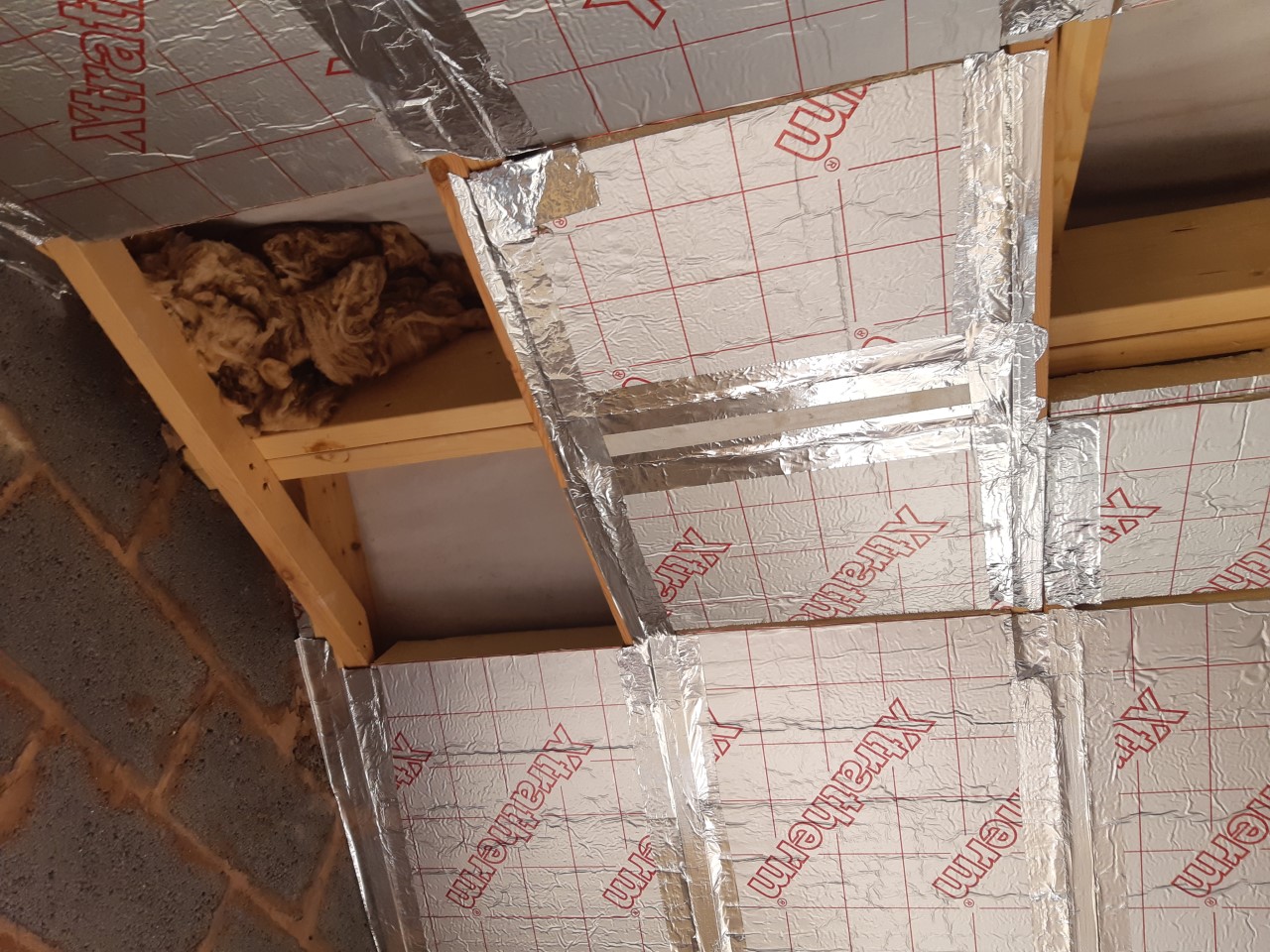Hi All
Designing a wall type for an extension im doing, currently build up looks like this:
Outside to In
Oak Cladding (laid vertical)
Timber Battens (50mm) (25mm vert, 25mm horz)
Breather Membrane
9mm OSB
140 Stud filled with wool insulation
50mm PIR
25mm batten (and services void)
12.5mm plasterboard
I have purposefully left the VCL out of this list as I'm trying to work out the best place for it.
It seems pretty standard if I wanted to place the VCL on the inside of the PIR (ie between PIR and batten, but I'd like to explore the option of placing it outside the PIR.
Can I staple the VCL to the 140 timber frame, then place the PIR over this. Fixing the VCL to the frame will be easier and the PIR will offer protection to the VCL.
Anybody think this will create a moisture problem or built this detail themselves?
Thanks
D
Designing a wall type for an extension im doing, currently build up looks like this:
Outside to In
Oak Cladding (laid vertical)
Timber Battens (50mm) (25mm vert, 25mm horz)
Breather Membrane
9mm OSB
140 Stud filled with wool insulation
50mm PIR
25mm batten (and services void)
12.5mm plasterboard
I have purposefully left the VCL out of this list as I'm trying to work out the best place for it.
It seems pretty standard if I wanted to place the VCL on the inside of the PIR (ie between PIR and batten, but I'd like to explore the option of placing it outside the PIR.
Can I staple the VCL to the 140 timber frame, then place the PIR over this. Fixing the VCL to the frame will be easier and the PIR will offer protection to the VCL.
Anybody think this will create a moisture problem or built this detail themselves?
Thanks
D


